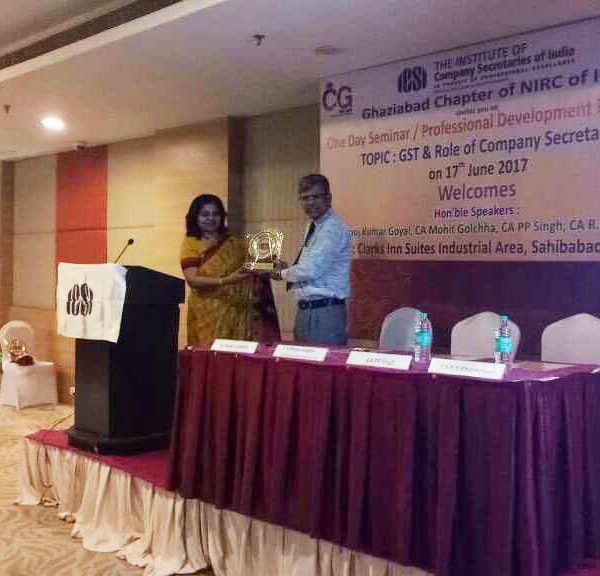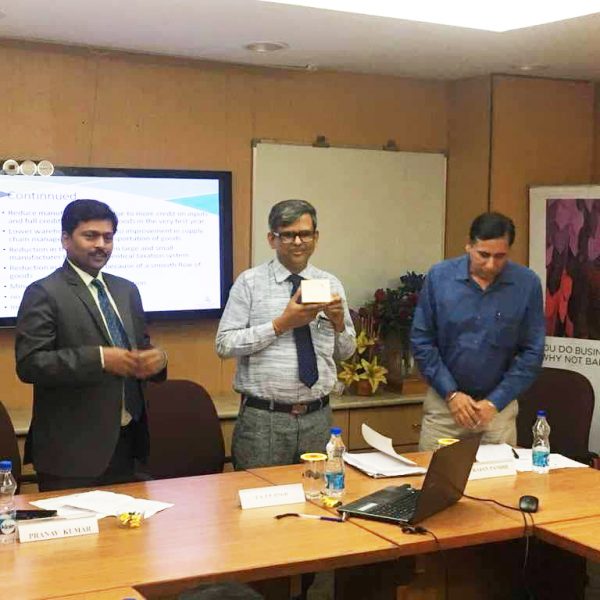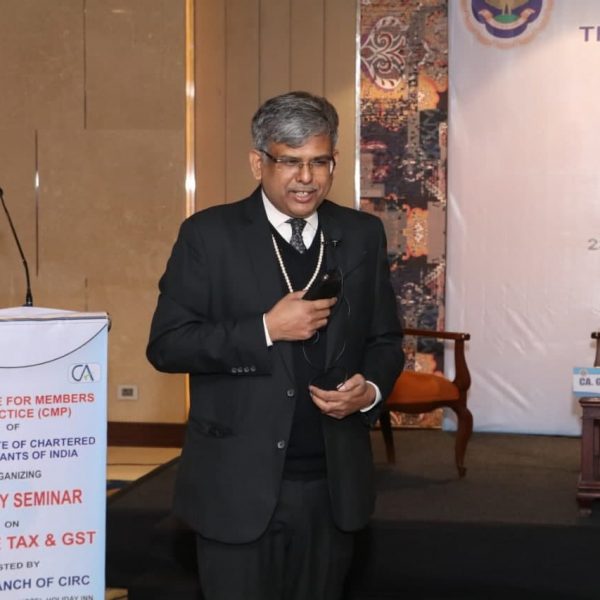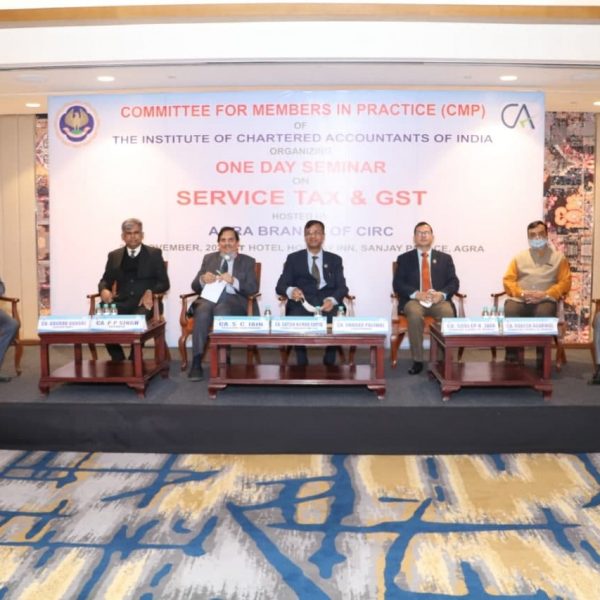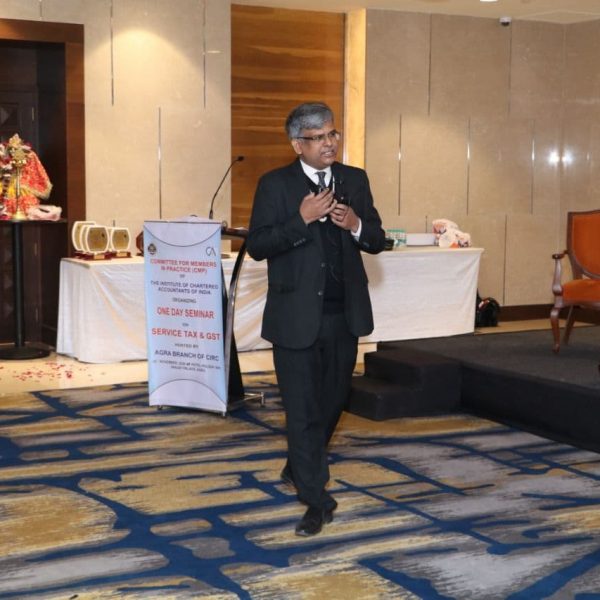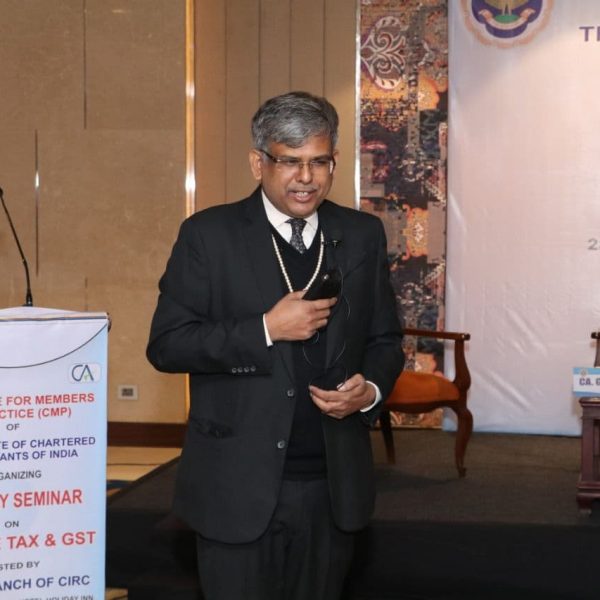Unexplained cash credit-section 68 of Income Tax Act
Introduction: cash credits always remain a major area of litigation under income tax and after an increase in tax rate from 30% to 60 % under section 115BBE effective tax rate becomes 83.25%( 60 % tax, 25% surcharge, 6% penalty, education cess 4%) and this will increase litigation. The provision relating to cash credit, under section 68, was introduced for the first time in the Income Tax Act 1961. There was no corresponding provision in the Income Tax Act 1922. Even prior to the introduction of section 68 in the income tax Act, courts had held that where any amounts were found credited in the books of the assessee in the previous year and the assessee offered no explanation about the nature and source thereof or the explanation offered was not satisfactory in the opinion of the ITO, the sums so credited could be charged to income-tax as income of the assessee of a relevant previous year. Section 68 was inserted in the I.T. Act, of 1961, only to provide statutory recognition to a principle that had been clearly enumerated in judicial decisions.
Meaning of Cash Credits:
Any sum found credited in the books of account of the taxpayer, for which he offers no explanation about the nature and source thereof or the tax authorities are not satisfied by the explanation offered by the taxpayer, is termed as cash credit.
Basic provisions
The provisions relating to the tax treatment of cash credit are given in section 68. As per section 68, any sum found credited in the books of a taxpayer, for which he offers no explanation about the nature and source thereof or the explanation offered by him is not, in the opinion of the Assessing Officer, satisfactory, may be charged to income-tax as the income of the taxpayer of that year.
In the case of borrowings satisfactory explanation from loan providers also: Further, as per 1st proviso to section 68 inserted by FA 2012 w.e.f 01-04-2013, where any amount is found credited in the books of an assessee by way of loan or borrowing or any such amount, the explanation of the assessee cannot be deemed to be satisfactory unless:
(a) the person in whose name such credit is recorded in the books of such assessee also offers an explanation about the nature and source of such sum so credited; and
(b) such explanation in the opinion of the Assessing Officer aforesaid has been found to
be satisfactory.
Cash credit in a closely held company by way of share application money: as per 2nd proviso to section 68 inserted by FA 2012 w.e.f 01-04-2013, in case of a taxpayer being a closely held company (i.e., not being a company in which the public are substantially interested), if the sum so credited consists of share application money, share capital, share premium or any such amount by whatever name called, any explanation offered by the such company shall be deemed to be not satisfactory, unless:
(a) the person, being a resident in whose name such credit is recorded in the books of such company, also offers an explanation about the nature and source of such sum so credited; and
(b) such an explanation in the opinion of the Assessing Officer has been found to be satisfactory.
Note: in such cases, satisfactory explanations from shareholders/share applicants are also required besides satisfactory explanations from the closely held company.
3rd proviso to section 68:
Exception: The above-discussed provisions 1st and 2nd shall not apply if the person, in whose name such sum is recorded, is a venture capital fund or a venture capital company as referred to in section 10 (23FB).
General Principles for taxing cash credit:
The conditions for the applicability of s. 68 are:
- The existence of books of accounts maintained by the assessee himself;
- A credit entry in the books of account; and
- Assessee offers no explanation of such credit entry or No satisfactory explanation by the assessee about the nature and source of the sum credited.
- The existence of books of accounts maintained by the assessee himself: In other words, such books have to be the books of the assessee himself and not of any other assessee.
The existence of Books of Accounts is a sine qua non-condition for the applicability of s. 68: In Anand Ram Raitani v. Commissioner of Income-tax High Court Of Gauhati held that The Assessing Officer before invoking the power under Section 68 of the Act must be satisfied that there are books of account maintained by the assessee and the cash credit is recorded in the said books of account and if the assessee fails to satisfy the Assessing Officer, the said sum so credited has to be charged to income-tax as the income of the assessee of that previous year. The existence of books of account is a condition precedent for invoking power. The first condition necessary for invocation of power is the existence of the books of account.
Books of Accounts of partnership firms and partners are different:
Section 68 applies where the books of the assessee show a cash credit entry. The term “assessee” has been defined by Clause (7) of Section 2 to mean a person by whom any tax or any other sum of money is payable under this Act. Section 2(31) defines the expression “persons” to include an individual, a Hindu undivided family, a company, a firm or association, etc. The I.T. Act makes a distinction between an individual as a person who is liable as an assessee on the one hand and a firm on the other being as much an entity liable to assessment independently of the individuals who may constitute its partners. When Section 68 uses the term “books of an assessee”, it refers to the assessee whose books show the cash credit entry.
A partnership firm is an assessable entity distinct from the individual partner. The books of account of a partnership cannot be treated as those of the individual partner. In the case of the firm, the books maintained by the firm should show a cash credit entry and the firm’s explanation should be found unsatisfactory, then only Section 68 will entitle the ITO to include the amount of the entry as the income of the assessee-firm. The above position of law is enunciated from the principle that a partnership firm is an assessable entity distinct from its individual partners constituting the firm.
In Smt. Shanta Devi v. Commissioner of Income-tax the assessee does not maintain any books of account. The cash credit entry was found in the books of the account of the partnership firm which in its own right is an assessee. It was held that the books of account of the partnership firm cannot be considered as those of the individual assessee and, therefore, section 68 of the Income-tax Act would not be attracted in such a case.
- A credit entry in the books of account is a must for applicability of section 68 but not mandatory in the case of Section 69 because section 69 may be applicable in a situation where books of account are not maintained.
A close reading of both these Sections makes it clear that in Section 68, there should be a credit entry in the books of account, whereas, in Section 69, there may not be an entry in the books of account. This is a fundamental difference between the two provisions. Section 69 applies only where investment has been made but the source of such investment has not been satisfactorily explained, the income should be treated to be the income of the assessee whereas, in the case of Section 68, there should be a cash credit in the books of account but not satisfactorily explained, then it should be treated as income of the assessee.
III. No explanation or no satisfactory explanation by the assessee about the nature and source of the sum credited.
Assessee can furnish alternative explanations:
Section 68 provides that where any sum is found credited in the books of an assessee maintained for any previous year, and the assessee offers no explanation about the nature and source thereof or the explanation offered by him is not, in the opinion of the ITO, satisfactory, the sum so credited may be charged to income-tax as the income of the assessee of that previous year. section 68, on a proper construction, does not debar the assessee from offering alternative explanations and if either of them is accepted, the cash credit cannot be charged as the income of the assessee. Therefore, an assessee can furnish alternative explanations, and if any one of them is accepted, the cash credit cannot be charged as the income of the assessee.
The Assessing Officer must be satisfied:
The section requires that the assessing officer must be satisfied that the explanation offered by the assessee is genuine. Section 68 of the Act does not stop at advancing of explanation about the nature and source of any sum found credited in the books by the assessee; the Assessing Officer is also required to be satisfied that the explanation offered by the assessee is acceptable and/or in other words, genuine. When the law has given to the Assessing Officer discretion and it is his satisfaction upon which genuineness has to be decided, his inference on the basis of the facts is a finding of fact.
In CIT v. Daulat Ram Rawatmull, the Supreme Court held that the fact that the depositor had not been able to give a satisfactory explanation regarding the source of the deposit would not be decisive even of the matters as to whether the depositor was or was not the owner of the amount, that a person could still be held to be the owner of a sum of money even though the explanation furnished by him regarding the source of that money was found to be incorrect, and that from the simple fact that the explanation regarding the source of the money had been found to be false, it would be a remote and far fetched conclusion to hold that the money belonged to the assessee.
Unexplained cash credit may or may not be charged to income-tax:
Section 68 uses the word may and not shall as it was contained in the original Bill introduced in the parliament. It was replaced at the instance of a select committee because if AO is of the opinion that such amount belongs to others, AO should have the power to tax such amount in the hands of that person, and may bring more tax also.it Is the discretion of the AO to tax in the hand of persons in whose books cash credit or if such money belonged to others same can be taxed in the hand of other person as well but certainly in the hands of one person only.
The section requires that the assessing officer must be satisfied that the explanation offered by the assessee is genuine; but it also provides that in the absence of a satisfactory explanation, the unexplained cash credit may be charged to income tax. An unsatisfactory explanation does not automatically result in deeming the amount credited in the books as income of the assessee. The phraseology of section 68 is clear. The Legislature has laid down that in the absence of a satisfactory explanation, the unexplained cash credit may be charged to income tax as the income of the assessee of that previous year. The legislative mandate is not in terms of the words shall be charged to income tax as the income of the assessee of that previous year. In CIT v. Smt. P. K. Noorjahan [1999] 103 taxmann 382 , the Supreme Court while interpreting similar phraseology used in section 69 has held that in creating the legal fiction the phraseology employs the word may and not shall. Thus the unsatisfactoriness of the explanation does not and need not automatically result in deeming the amount credited in the books as the income of the assessee.
Therefore, according to Section 68, the first burden is on the assessee to satisfactorily explain the credit entry in the books of account of the previous year. If the explanation given by the assessee is satisfactory, then that entry will not be charged with the income of the previous year of the assessee. In case the explanation offered by the assessee is not satisfactory or the source offered by the assessee-firm is not satisfactory, then in that case, AO to examine whether it is of income nature or based on record it is otherwise not an income even though no explanation from assessee or unsatisfactory explanation from the assessee, accordingly the amount may be taken to be the income of the assessee and if AO of the view that such money belongs to another person, same can be taxed in the hands of that person.
Burden of Proof and shifting of Onus:
The burden of proof: as per section 103 of the Indian Evidence Act “The burden of proof as to any particular fact lies on that person who wishes the Court to believe in its existence unless it is provided by any law that the proof of that fact shall lie on any particular person.” Therefore in the case of cash credit burden of proof is upon the assessee to prove that cash credit is from disclosed source and legitimate way. Identity, creditworthiness, and legitimacy of transactions to be proved by the person in whose book cash credit was found. Section 68 is to tax under-taxed money of the assessee earned during PY or any other preceding years brought into books of account by way of cash credit. AO cannot tax legitimate amounts received from identified creditors as loans etc.
Whether burden of proof on the legal heir? as per section 106 of the Indian Evidence Act 1872 if any fact is especially within the knowledge of any person, the burden of proving that fact is upon such person. In this case, also the burden of proof is upon the assessee to explain the nature and source of investment because it is especially within his knowledge and no one else. This burden cannot be shifted to the legal heirs and legal heirs could not be forced to explain such an explanation that is not known to them. Assessee means original assessee and not the legal heir. C.selvakumar vs.ITO(2006) 6 SOT 646 Cochin. / smt rajabai B. Kadambari Vs, ACIT [2002] 83 ITD 229 Pune.
It is common knowledge that the burden of proof has got two meanings. In its primary meaning, it means the burden of establishing the case. The second meaning of burden of proof is as a principle of evidence. In the second sense, the burden would be shifting from one party to the other as and when adequate evidence to discharge the burden which lay on a party is being produced by that party.
Whether the burden shifts from one party to the other is always a question of fact and it would depend upon the facts and circumstances of each case. In the case of cash credits, the burden of establishing the truth of the cash credits always lies on the person who introduces the cash credit and who seeks a fact-finding authority to believe the truth of the cash credit. That means the burden of proof in its primary sense in the case of cash credits lies upon the assessee. However, in the secondary sense, the initial burden would be on the assessee and if he is able to produce adequate and sufficient material to discharge his burden, then the further burden to falsify the evidence let in by the assessee and ultimately to prove that the cash credits may not be true is on the revenue.Asst.CIT Vs.kumar Ice[1998]64 ITD93(Pat) (TM )
Note: it was the first year of business of AOP and in fact business not started just the purchase of the plant and machinery and construction of building therefore no question of the undisclosed income of the assessee.
In Nanak Chandra Laxman Das v. CIT the Allahabad High Court has taken a view that where any sum is found credited in the books of the assessee, the initial onus is on the assessee to offer an explanation of the nature and source of cash credit. If the explanation is not found satisfactory or reasonable, the Income-tax Officer can treat such cash credit as income of the assessee from undisclosed sources. It is not necessary for the Income-tax Officer to locate the exact source of the credits. The assessee can prove the genuineness of the credits by establishing from some plausible evidence identity of the creditor and his creditworthiness.
In CIT v. Kishorilal Santoshilal, it was held that: In the case of cash credits in the accounts of a firm
(i) if there is no distinction between the cash credit entry existing in the books of the firm whether it is of a partner or of a third party; (ii) the burden to prove the identity, capacity and genuineness is on the firm;(iii) if the cash credit is not satisfactorily explained, the Income-tax Officer is justified to treat it as income from undisclosed sources; (iv) the firm has to establish that the amount was actually given by the lender; (v) the genuineness and regularity in the maintenance of accounts has to be taken into consideration by the taxing authorities, and (vi) if the explanation is not supported by any documentary or other evidence, then the deeming fiction created by Section 68 of the Income-tax Act, 1961, can be invoked.
Onus on the assessee to prove the source and nature of receipt:
The onus of proving the source of a sum of money found to have been received by an assessee is on him. If he disputes the liability for tax, it is for him to show either that the receipt was not income or if it was so, it was exempt from taxation under the provisions of the Act. In the absence of such proof, the Revenue is entitled to treat it as taxable income.
In A. Govindarajulu Mudaliar v. CIT the Court came to the conclusion that There is ample authority for the position that where an assessee fails to prove satisfactorily the source and nature of a certain amount of cash received during the accounting year, the Income-tax Officer is entitled to draw the inference that the receipt is of an assessable nature.
In Kale Khan Mohammad Hanif v. Commissioner of Income-tax the Supreme Court, in answering the question, of whether the burden of proving the source of the cash credit is on the assessee observed that It is well established that the onus of proving the source of a sum of money found to have been received by the assessee is on him. If he disputes liability for tax it is for him to show either that the receipt was not income or that if it was, it was exempt from taxation under the provisions of the Act. In the absence of such proof, the Income-tax Officer is entitled to treat it as taxable income.
Shifting of onus to the department:
The language of section 68 shows that it is general in nature and applies to all credit entries whether in the name of the assessee or a third party. This section 68 has, therefore, removed the distinction which was drawn in some decisions between the credits held in the name of the assessee and those held in the name of a third party. Under Section 68 now the assessee has to prove that such third party was in a position to lend such sums and that he did, in fact, so lend to the assessee in order to satisfy the Income-tax Officer that the credits shown in the account books were genuine. This section has laid the onus of proof on the assessee.
In Orient Trading Co. Ltd. v. Commissioner of Income-tax, one of the questions referred to the Bombay High Court was whether there was any material before the Tribunal to hold that a sum standing in the books of the assessee to the credit of a third party belonged to the assessee. The Bombay High Court discussed the nature and significance of cash credits in such cases and observed that when cash credits appear in the accounts of an assessee, whether in his own name or in the name of third parties, the Income-tax Officer is entitled to satisfy himself as to the true nature and source of the amounts entered therein, and if after investigation or inquiry, he is satisfied that there is no satisfactory explanation as to the said entries, he would be entitled to regard them as representing the undisclosed income of the assessee. When these credit entries stand in the name of the assessee himself, the burden is undoubtedly on him to prove satisfactorily the nature and source of these entries and to show that they do not constitute a part of his business income liable to tax. When, however, entries stand, not in the assessee’s own name, but in the name of third parties, there has been some divergence of opinion expressed as to the question of the burden of proof. The Income-tax Officer’s rejection not of the explanation of the assessee, but of the explanation regarding the source of income of the depositors, cannot by itself lead to any inference regarding the non-genuine or fictitious character of the entries in the assessee’s books of account.
Treatment of Explanation by the assessee. The length of time taken after the assessee is called upon to explain a cash credit is also a relevant factor in considering whether the evidence produced is satisfactory. The inability of the department to verify the explanation offered by the assessee is not a sufficient cause for the rejection of the explanation. At the same time, it is not correct to say that the AO is not entitled to reject the explanation without some other positive evidence falsifying the assessee’s case. The true test is that, while the AO is not bound to accept as true any possible explanation that the assessee may put forth, he cannot also arbitrarily reject the assessee’s explanation.
Section 68 of the Act does not stop at advancing of explanation about the nature and source of any sum found credited in the books by the assessee; the Assessing Officer is also required to be satisfied that the explanation offered by the assessee is acceptable and/or in other words, genuine.
Rejection of explanation by the AO:
In Sona Electric Co. v. Commissioner of Income-tax, the Court held that the section makes it clear that the entry can be rejected if the explanation offered by the assessee can be rejected by the ITO on cogent grounds. When such grounds are themselves based on no evidence, the question of presumption does not arise. However, it was not open to the Assessing Officer to merely surmise that it would not be probable for the assessee to keep the amount unutilized for a period of two years. The AO ought to have given an opportunity to the assessee to substantiate his assertion.
Result of Rejection of Assessee’s Explanation:
In K.S. Kannan Kunhi v. Commissioner of Income-tax it was held that it is not the law that, when once the explanation is rejected, it automatically follows that the receipts are income. Whether an explanation is acceptable, and if not, whether it should be inferred that the receipts constitute income, are different aspects of the same question. Both these aspects are interrelated, and the question of whether such receipts constitute income or not has to be decided on a consideration of all the relevant facts and circumstances of the case. It is quite legitimate in the case of an assessee who is known to be carrying on several activities of an income-earning character or who can reasonably be found to be involved in such activities, to draw the inference that the amounts found with him constitute income from undisclosed sources, in the absence of satisfactory explanation regarding their source. Such an inference should not be readily made in the case of a person, who has no known business or other sources of income, or who cannot even be reasonably suspected of engaging in any income-earning activities. In the latter case, there must be more substantial reasons to reject the assessee’s explanation and draw the inference that the amounts found with him constitute income.
Presumptions:
In S.N.Ganguly v.Commr.of Income-tax the Court held that there is no presumption in law that the amount standing in the name of the wife belongs to the husband. Unless there are some materials before the Income-tax Department to suggest that the amount standing in the name of wife really belonged to the assessee, there would be no justification on the part of the Income-tax authorities to tax this amount. The principle to be applied is that in the absence of evidence to the contrary, the money standing in the name of the wife must be presumed to belong to her, and an assessee cannot be taxed in respect of the amount standing in the name of the wife. The onus of proof in such a case will be not on the assessee but on the Income-tax Department to show by at least some material that the amount standing in the name of the wife does not belong to the wife but belongs to the assessee.
In Commissioner of Income-tax v. P. Darolia and Sons, the Court held that it is a well-established principle that in respect of an amount of cash received during the accounting year, the burden of proof is upon the assessee to show positively the source and nature of the receipt, and in the absence of an adequate explanation the Revenue authorities are entitled to draw the inference that the receipts are of an income nature and liable to be taxed. But there is no presumption in such a case that the cash receipt is an income of the same business for which the assessee has kept the regular business of account. The question is really a question of fact, to be decided upon the material furnished in each particular case. The cash receipt may be income either from the same business carried on by the assessee or from a different business.
In Lakshmichand Baijnath v. The Commissioner of Income-tax, West Bengal it was held that if there is no source of income other than business for which the assessee has maintained books that disclose cash credits, the presumption is that the cash credits represent income from the same business. Thus, in Commissioner of Income-tax v. Margaret’s Hope Tea Co. Ltd. the cash credits appearing in the books of the assessee whose main activity was the cultivation, manufacture, and sale of tea, was held to be treated as income of the assessee from its tea business.
In A.S. Swan Pillai v. CIT, it was held that there is no presumption in favour of any illegality of a transaction. In fact, the presumption is the other way about. There must be evidence to show that the assessee did sell goods in excess of the legally fixed rates.
In Tolaram Daga v. CIT, the court held that unchallenged account books are prima facie proof of the correctness of the entries made therein. Further, there is no presumption that the husband has knowledge about the source of an income standing in the name of his wife.
Explanation for a source of cash credit:
Intangible addition made as source of cash credit :
Assessee has to prove a negative fact that such cash was not spent and remains available with the assessee for introduction as cash credit during the previous year. Separate profit or undisclosed income of the assessee earned in the A.Y may constitute the fund, even though concealed, may be used in the subsequent years for expenditure or introducing cash in the book. The true nature of cash deficit and cash credit must be ascertained from overall consideration of facts and circumstances of the case Anantha Ram VeeraSighaniah & co. V/s CIT [1980] 123 ITR 457 (SC)
Cash credit represents the sale proceeds of the assets:
Cases where summoned issued to the creditors for verification of translation with the assessee but the creditor declined to have any transaction with the assessee. Such a case is covered not only under section 68 but also cover under the prohibition of benami property transaction Act 1988.
Cases were summon issued to the creditors for verification of translation with the assessee but returned unserved: addition could be made for cash credit. It is the assessee to proof the identity, credit worthiness and genuineness of the cash credit transaction.
Confirmation letter from the creditors: where a creditor has confirmed advanced money to the assessee along with identity such as Pan no., Adhar, Voter id card etc. along with the details of transaction through banking channels and the nature of transaction such as loan or advance or gift etc. and copy of the assessment order of the creditor. Creditors have the capacity to make payments then in such a case cash credit can not be treated as unexplained. Once the onus is discharged by the assessee the onus is shifted to the AO and if, still AO wants to tax he has to bring contrary material confronted to the assessee.
The physical presence of the creditors: insistence for the physical presence of the creditor without going through the documents/evidences is not justified particularly were AO has did nothing for physical presence of the creditors by way of issuance of summons/ notices. CIT V/s Orissa corpn.(P) Ltd. 1986 25 taxman 84/159 ITR 78 (SC) where in hon’ble supreme court ovserved that “In this case the assessee had given the names and addresses of the alleged creditors. It was in the knowledge of the revenue that the said creditors were the income-tax assessees. Their index number was in the file of the revenue. The revenue, apart from issuing notices under section 131 at the instance of the assessee, did not pursue the matter further. The revenue did not examine the source of income of the said alleged creditors to find out whether they were credit-worthy or were such who could advance the alleged loans. There was no effort made to pursue the so-called alleged creditors. In those circumstances, the assessee could not do any further. In the premises, if the Tribunal came to the conclusion that the assessee had discharged the burden that lay on him, then it could not be said that such a conclusion was unreasonable or perverse or based on no evidence. If the conclusion was based on some evidence on which a conclusion could have arrived, no question of law as such could arise. The High Court was, therefore, right in refusing to refer the questions sought for.”
Inability of the assessee to produce creditors :
it is not always within the power of assessee to produce creditors repeatedly from time to time, several years after the transaction taken place. Only on the basis of inability of the assessee to produce creditors could be a reason for disbelieving the genuineness of the creditors. Mittal and Co.V/s ITO 1982 13 TTJ
Assesse can not be asked to do something which is beyond his control. Assessee has no legal power to enforce the attendance of the creditors of AO. Addition on the ground of non attendance can not be sustained where assesse has other wise filled all the relevant documents including conformation of the creditors, copy of return, bank statement, etc ACIT vs INDIA TYRE HOUSE (2001) 72TTJ 316 (GAU).
Alternative explanation : there is no bar upon the assesee for offering alternative explanation and if either off them accepted, the cash credit could not be charged as income of the assessee Additional CIT V/s Ghai lime stone Co 1982 11 taxman 58 (MP).
The distinction between sections 68 and 69
- For sec. 68 addition books of account and cash credit there in a must whereas for unexplained investment u/s 69 assessees may or may not have books of account.
- Section 68 operates for receipts whether in cash or bank credit in the books of account where as sec. 69 operates for unnexpand investment for which there is no source of income from the disclosed source.
The distinction between section 68 and 69D: section 69D operates where the amount borrowed on hundi, it is a specific situation of cash credit where as sec. 68 cover all the credits for which assessee has no satisfactory explanation.
Section 132 vs section 68:
Section 68 is a specific provision about cash credits and the burden is on the assessee to explain the nature and source of credits in his books. The assessee is required to discharge this onus. Used In regular assessment proceedings, as well as search cases as well, even the assessee on his own offer tax u/s 115BBE for such cash credit.
Section 132(4A) does not override this specific provision. Section 132(4A) was introduced by the Taxation Laws (Amendment) Act, 1975, with effect from 1-10-1975. Clause (ii) thereof, on which reliance was placed by the assessee before the authorities, provides that contents of ‘such books of account and other documents are true’. The expression relates to any books of account or other documents, etc., found in possession or control of any person in the course of a search. The presumption arises in respect of the contents of such books of account and other documents. Such presumption arising under section 132(4A) is clearly linked with the search and seizure. Sections 132A to 132B of the Act provide an integrated scheme laying down the procedure for search and seizure and the power of the authorities making the search and seizure to order the confiscation of assets seized under section 132. In other words, the presumption arising under section 132(4A) must be held to be applicable only in relation to the provisional adjudication as contemplated under sub-section (5) of section 132. The presumption cannot be said to have the effect of excluding the operation of section 68. The question of the applicability of section 68 arises only in the course of regular assessment. The provisions of section 132(4A) are restricted to search and seizure as provided in Chapter XIII, Part ‘C’. In essence, section 132(4A) does not override or exclude the application of section 68. The requirement of section 68 has to be fulfilled by the assessee. Daya Chand Vs. CIT 2001] 117 Taxman 438 (Delhi) (HC).
Unexplained cash credit 68 Vs. benami transaction: Whereas cash credit recorded in a fictitious name, it is a case of benami transaction under covered under benami law and at the same time due to lack of identity of creditors section 68 also applicable. So both the law may operate on same transaction.
Loan/deposit can not be added both in the hands of the borrower as well as a lender: VIRENDRA KUMAR SAKLECHK vs DCIT [1997] 59 TTJ 785 (IND) there was force in the arguments of the assessee that once the loan advanced to Mrs. C was treated as unexplained in the hands of the HUF, the source of the borrowings in the hands of Mrs. C became explained and as such no addition was called for in the hands of Mrs. C. Furthermore, while the cash credit in the hands of Mrs. C was explained, it could not be treated as income of the assessee and no addition could be made in the hands of the assessee.
The same amount can be taxed in the hands of firms u/s 68 and partner’s hand u/s 69: The explanation offered by the assessee was that partners had surrendered said amount in their individual returns and that they had been assessed thereon so no tax in the hands of firms where cash credit in the name of partners but Assessing Officer rejected said explanation and made addition in the hand of firm as these two are separate assessee and can be taxed under different provisions of the Act. Jagmohan Ram Ram Chandra vs CIT [2004] 141 Taxman 574 (Allahabad) (HC).s
Loan details reported in the tax audit report is not sufficient to discharge the burden on the assessee as the assessee company has not provided the address of the depositors, the capacity of the depositors, and the source from where the loan was given to the assessee.
Deposit taken from the tenants: In regard to deposits from tenants, it is sufficient if the assessee proves the identity of the tenant and the genuineness of the transaction under which the deposit is made; it will not be necessary for the assessee to prove the capacity of the tenant to make the deposit/advance CIT vs Nevendram Ahuja [2007] 290 ITR 453 (Madhya Pradesh) (HC)
Conclusion: effort has been made to explain the provisions of the law. for any query reader can approach the author at cappsingh@gmail.com

